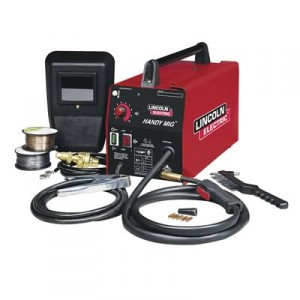 As gearheads, we spend our fair share of time contemplating the important things: Ford vs. Chevy, carb’ed vs. fuel injected, skulls vs. flames. But if you’re shopping for a welder, there’s one brainteaser that trumps them all: MIG or TIG?
As gearheads, we spend our fair share of time contemplating the important things: Ford vs. Chevy, carb’ed vs. fuel injected, skulls vs. flames. But if you’re shopping for a welder, there’s one brainteaser that trumps them all: MIG or TIG?
Whether you’re restoring a classic or prepping your car for the track, chances are good that you’ll need a welder along the way. But before you start stitching together body panels, fabricating custom brackets, or installing a one-off roll cage, you’ll need to pick a welder that’s right for you. Luckily, choosing the right welder is as simple as knowing what materials you’ll be working with and how much welding experience you have.
MIG (metal inert gas) welders are a good choice for beginners. They work by feeding a consumable wire electrode and a shielding gas—most commonly argon—through the welding gun and onto the surface to be welded. The wire acts as a filler metal and the gas protects the fresh weld from contamination as it cools.
MIG welders are capable of making strong, clean welds in a single pass but run the risk of creating spatter that’ll require some cleanup after you’re finished. Think of it as a hot glue gun for metal.
A portable 115V MIG welder can operate off of household current and can handle most metals up to 1/8-inch thick. For metals up to 5/8-inch thick, a 230V welder is the best choice. Due to temperature constraints, cast iron and aluminum should not be welded with a MIG welder.
TIG (tungsten inert gas) welders can produce a precise weld on any metal, although they’re generally slower and require more experience than a MIG welder. They heat the welding surface with an electric arc produced by a tungsten electrode. Unlike a MIG welder, they don’t require a filler metal, although it can be added by hand if needed. This produces a high-quality weld, free of spatter and smoke.
TIG welding offers an extremely hot, yet precise spark making it ideal for welding magnesium, aluminum, and stainless steel, as well as very thin materials. Just like a MIG welder, the TIG welding gun emits a shielding gas to keep the fresh weld clean.
And remember, whichever welder you choose, always be sure to use the proper safety precautions and equipment, including a helmet, gloves, apron, and blanket.

Thanks to the author for the article! Very pleased! Can you pleas guide me which Tig welder is best for the money?